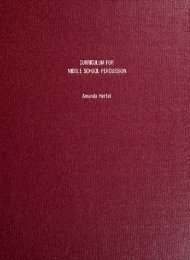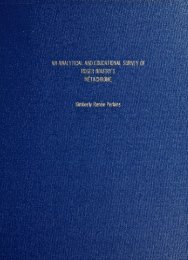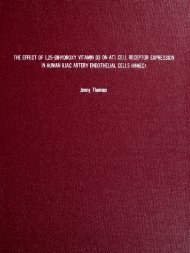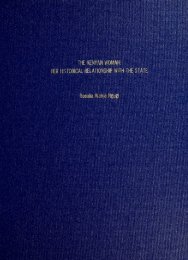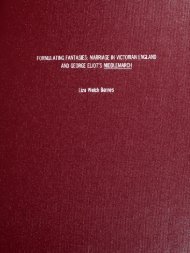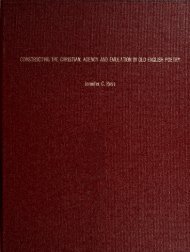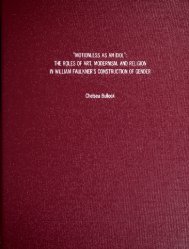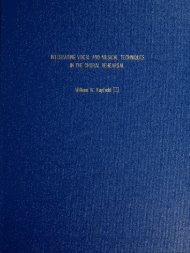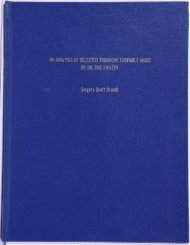An Analytical and Educational Survey of Howard Hanson's Dies ...
An Analytical and Educational Survey of Howard Hanson's Dies ...
An Analytical and Educational Survey of Howard Hanson's Dies ...
- No tags were found...
You also want an ePaper? Increase the reach of your titles
YUMPU automatically turns print PDFs into web optimized ePapers that Google loves.
19on the secondary seventh <strong>of</strong> the dominant (C-sharp), <strong>and</strong> the fourth begins on thedominant (D). Thus, the sequencing <strong>of</strong> melody in this section is from the root to the fifth.This relationship <strong>of</strong> the fifth was favored by Hanson, as were the major second <strong>and</strong> majorthird (Williams 1988). Additionally, a relationship exists within the four statements <strong>of</strong> themelody. The outer melodies start on the downbeat <strong>of</strong> the first measure <strong>of</strong> the phrases,while the inner melodies start on the second beat <strong>of</strong> the first measure <strong>of</strong> the four-barphrases. Structurally, this places the strong statements <strong>of</strong> the melody on the beginning<strong>and</strong> ending <strong>of</strong> the section, with the weaker, second-beat phrases on the inside <strong>of</strong> thesection.The pedal G <strong>and</strong> stable harmonic material is present throughout the introductionwith few exceptions. In the third melodic phrase <strong>of</strong> the introduction, the pedal shifts tothe fifth, D. Notably, this is the first occurrence where the G pedal changes. Theharmonic progression <strong>of</strong> this phrase is: b minor - C major - b minor - A major - G major- C major - b minor - C major. The pedal returns to a G pedal for the fourth melodicsegment. The fourth phrase builds in volume <strong>and</strong> in instrumentation so that all winds <strong>and</strong>timpani reach fortissimo at the last section <strong>of</strong> the introduction. This last section consists<strong>of</strong> two phrases in which the horns (plus saxophones in the first phrase) preview theupcoming melody with the first seven notes <strong>of</strong> the chorale, <strong>and</strong> the winds respond aftereach with the previously established harmonic progression over a G pedal. The timpanipedal is absent during the horns' statement <strong>of</strong> the chorale melody. The absence <strong>of</strong> pedal(along with the absence <strong>of</strong> harmonic accompaniment in the winds) draws attention to thebold forte horn statement <strong>of</strong> the melody.



